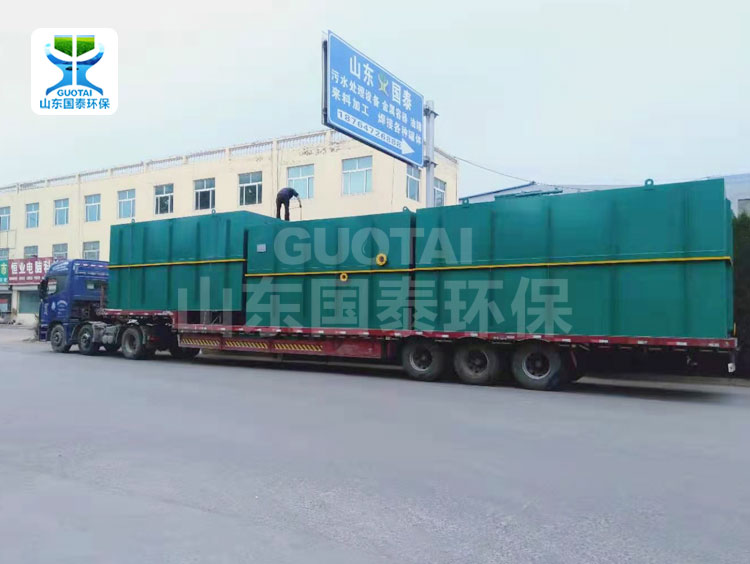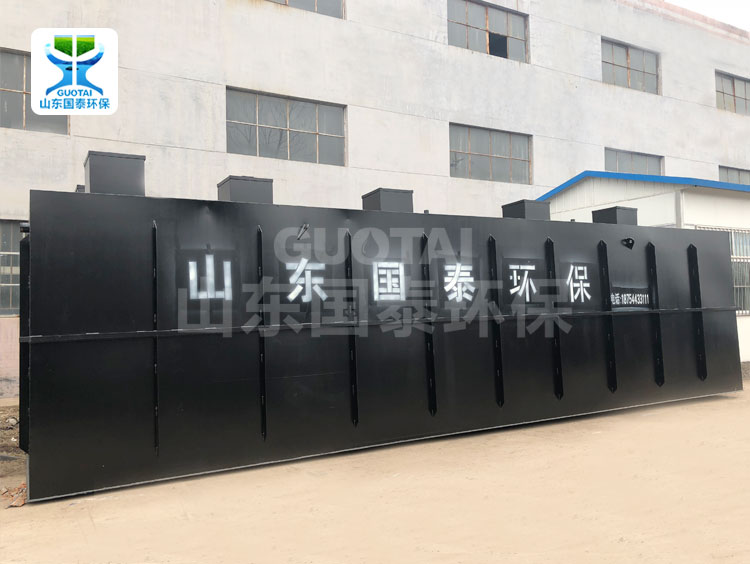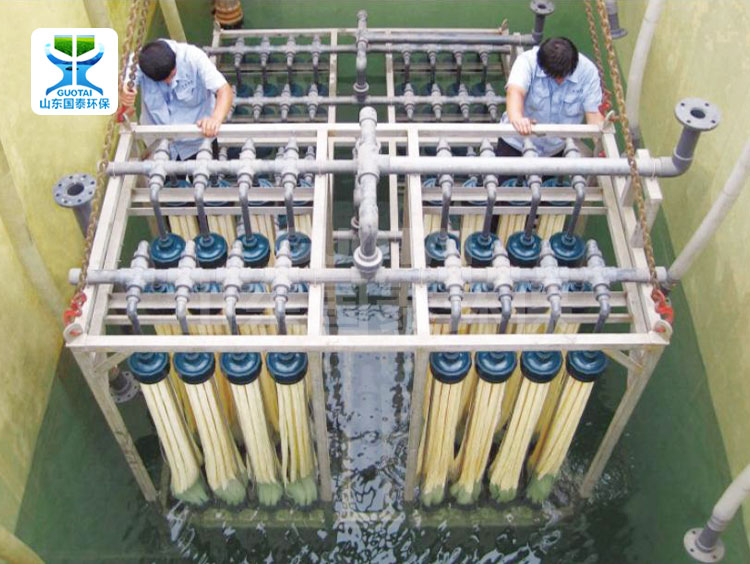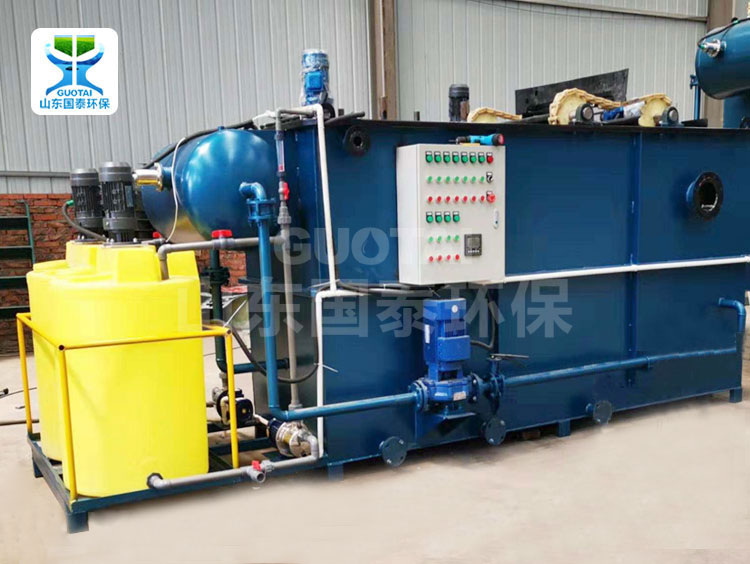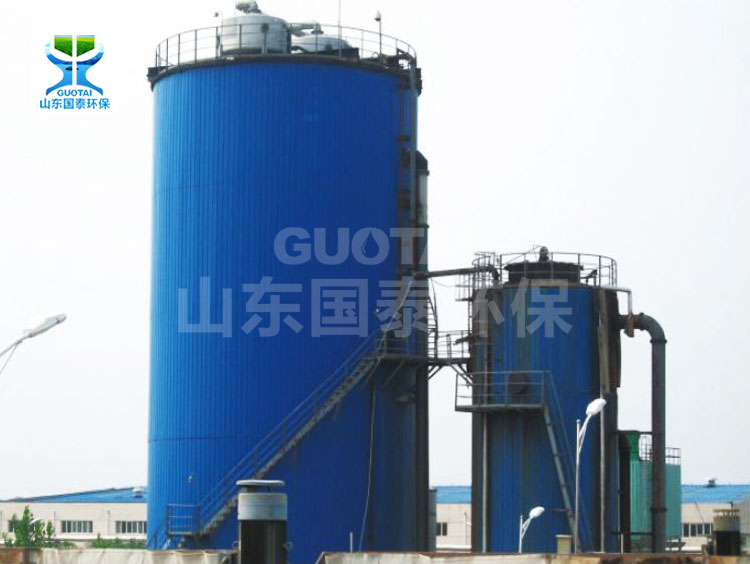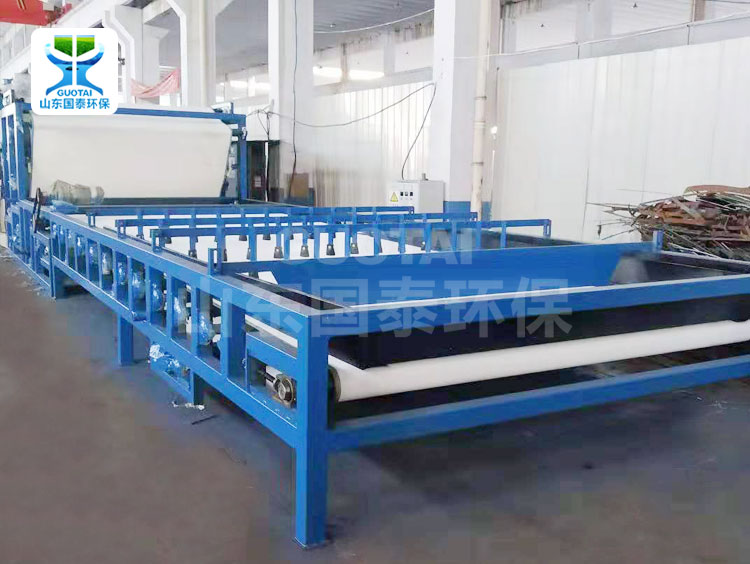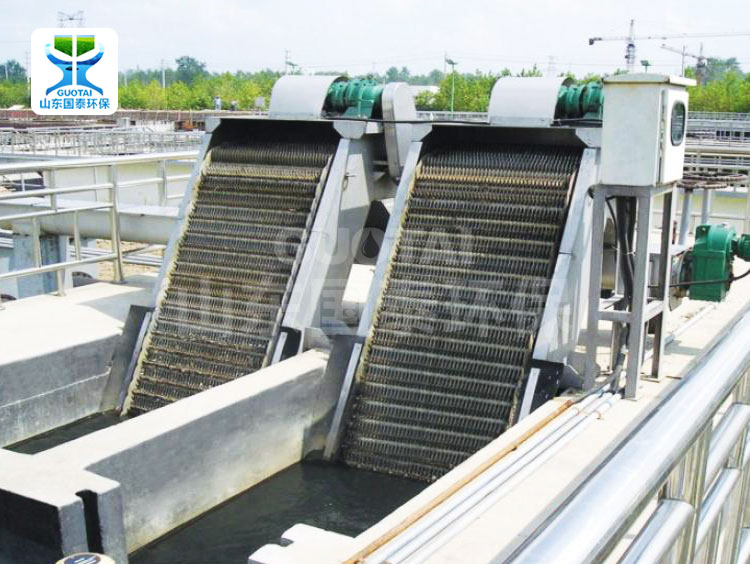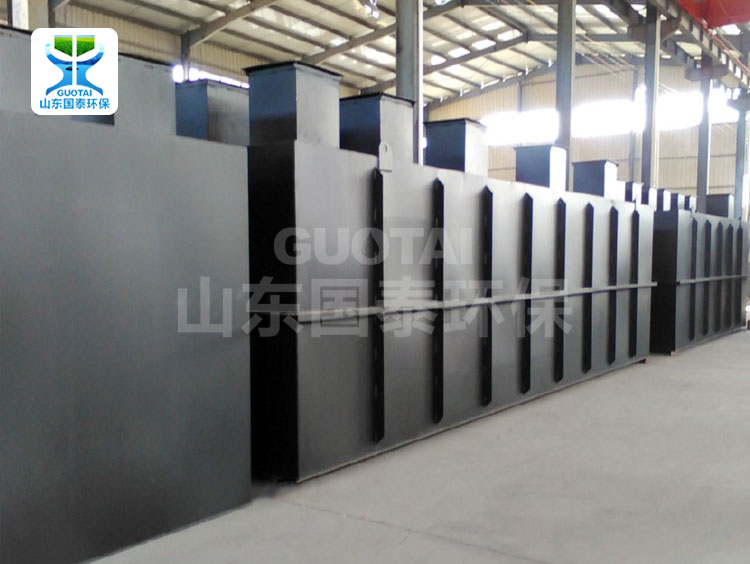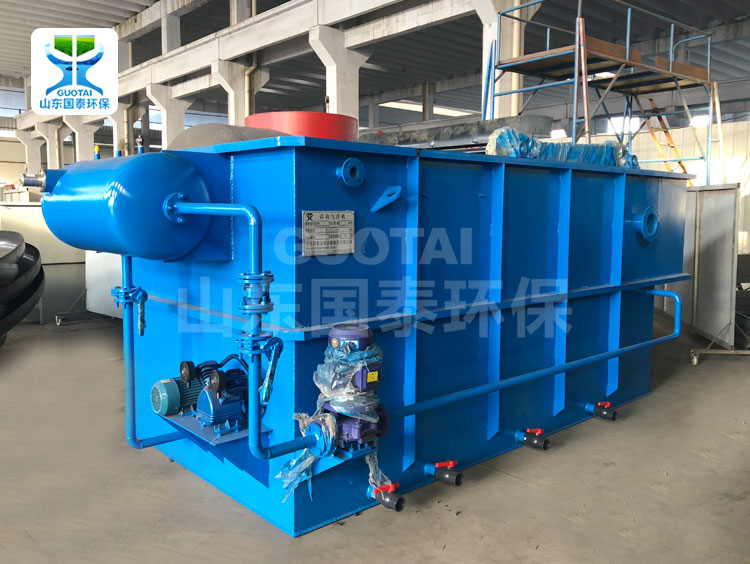Product center
◆Overview
Wastewater from the printing and dyeing industry refers to the waste water discharged from the printing and dyeing, wool weaving, dyeing and finishing, and silk factories that process cotton, linen, chemical fibers and their blended products, and silk. According to different fiber types and processing techniques, the amount and quality of printing and dyeing wastewater are also different.
Printing and dyeing wastewater has the characteristics of large water volume, high content of organic pollutants, large alkalinity, and large changes in water quality. It is one of the difficult-to-treat industrial wastewaters. The wastewater contains dyes, sizing agents, additives, oils, acid and alkali, and fiber impurities. , Sand materials, inorganic salts, etc.
Dyeing wastewater is mainly divided into the following categories:
1. Desizing wastewater. Containing various slurries and their decomposition products, fiber scraps, acid-base and enzymatic pollutants, etc., starch slurry wastewater contains high BOD and COD, while synthetic slurry wastewater contains high COD, BOD less than 5 mg/ L;
2. Refining wastewater. Cotton fiber wastewater has strong alkalinity, high COD and BOD values (up to thousands of mg/L), large water volume, high pollution degree, and brown color, while chemical fiber wastewater pollution degree is light;
3. Bleaching wastewater. Large amount of water and light pollution;
4. Mercerizing wastewater. It is alkaline, with a pH value of 12-13, contains a lot of suspended matter such as fiber debris, and has high BOD and COD values;
5. Dyeing wastewater. With different fiber types, dye types and concentrations, additives and scales, wastewater pollution levels are different, mainly containing organic dyes and surfactants, etc., with high alkaline COD and BOD and low suspended solids;
6. Printing wastewater. Mainly contain pollutants such as organic dyes and surfactants, with high COD and BOD values;
7. Finishing process wastewater. It mainly contains fiber scraps, resin, formaldehyde, oil and slurry, with little water. The concentration of wastewater from the wool textile dyeing and finishing plant is high. For every 454kg of washed wool produced, there is about 318t of wastewater. The water quality is brown and colloidal. The organic pollutants in BOD amount to 91~114kg.
The four processes of printing and dyeing must discharge wastewater. The pretreatment stage (including singeing, desizing, smelting, bleaching, mercerizing, etc.) must discharge desizing wastewater, smelting wastewater, bleaching wastewater and mercerizing wastewater, and discharge from the dyeing process. Dyeing wastewater, the printing process discharges printing wastewater and soap liquid wastewater, and the finishing process discharges the finishing wastewater. Printing and dyeing wastewater is a mixed wastewater of the above types of wastewater, or a comprehensive wastewater other than bleaching wastewater.
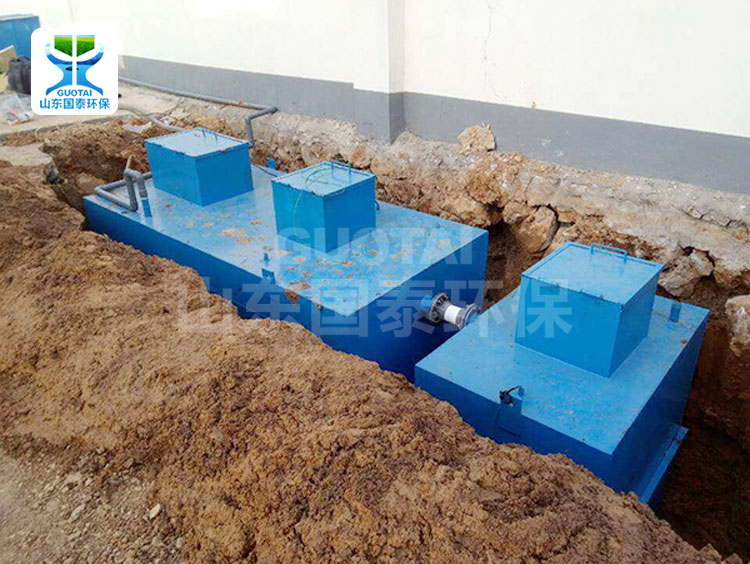
◆Process flow:
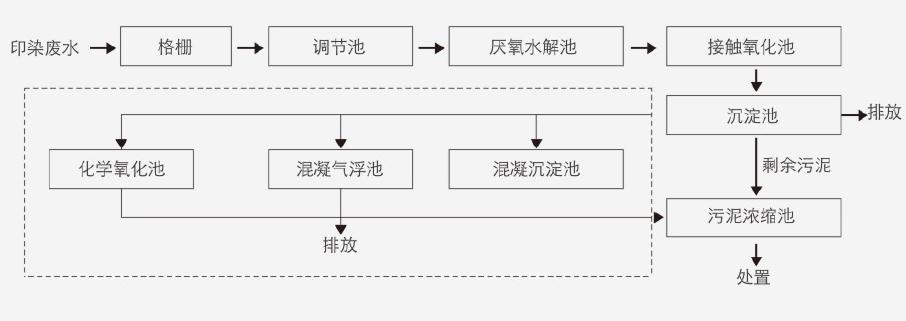
◆Process introduction
Regulating tank: The main function of the regulating tank is to homogenize water quality and balance water volume. The printing and dyeing wastewater discharge is uneven, the water quality changes greatly, and the process parameters are difficult to control. The residence time of the regulating tank should be as long as possible, and pre-aeration into the regulating tank. Through pre-aeration, the wastewater is mixed uniformly, and at the same time, it can prevent the settleable solid matter from settling down in the pool and appear anaerobic. It can also oxidize the reducing substances in the wastewater, blow off and remove volatile substances, and reduce the subsequent units. The operating load.
Flocculation reaction tank: The wastewater in the regulating tank is lifted to the flocculation reaction tank by a lift pump, and flocculants and flocculants are added to the tank, which are mixed evenly by mechanical stirring or air stirring, fully reacted, and the dye molecules are adsorbed, complexed and flocculated to form sludge , Fully separated from wastewater.
Decolorizer: In order to save energy consumption, wastewater flows from the flocculation reaction tank into the decolorizer. The sludge in the flocculation reaction tank, the remaining unreacted chemical agents, and the activated sludge returned from the secondary settling tank are uniformly mixed in the decolorizer through a variable speed mixing device to form a composite mud film layer. After the wastewater from the flocculation reaction tank uniformly passes through the composite mud membrane layer at an appropriate flow rate, the suspended solids, dye molecules and some pollutants in the wastewater are adsorbed and trapped by the composite mud membrane layer, thereby achieving the purpose of reducing CODCr and decoloring.
Biological treatment: Biological treatment is a waste water treatment method that decomposes and absorbs pollutant components in water through the metabolism of microorganisms. The wastewater treated by the decolorizer has removed most of the chroma and CODCr, and the B/C ratio has also been significantly improved, thereby shortening the residence time of biological treatment and saving energy and land.
Second sedimentation tank: Sedimentation is a process that uses the principle of gravity sedimentation to remove suspended solids in wastewater. A large amount of sludge is produced in the wastewater after biological treatment, and the supernatant can be discharged up to the standard or reused after advanced treatment through the separation of sedimentation sludge and water. Part of the precipitated sludge is returned to the decolorizer, and part is returned to the biological treatment unit.
Sludge treatment: The sludge discharged from the decolorizer enters the sludge thickening tank, and then is transported to the plate and frame filter press through the sludge pump for dehydration and drying, and the sludge moisture content can be reduced to below 80%.




